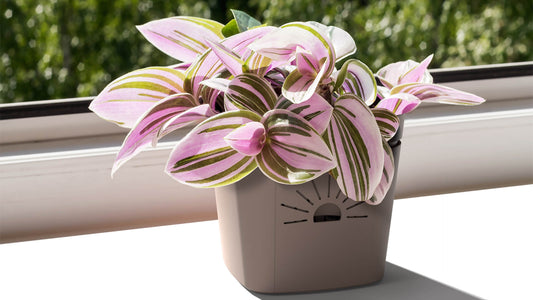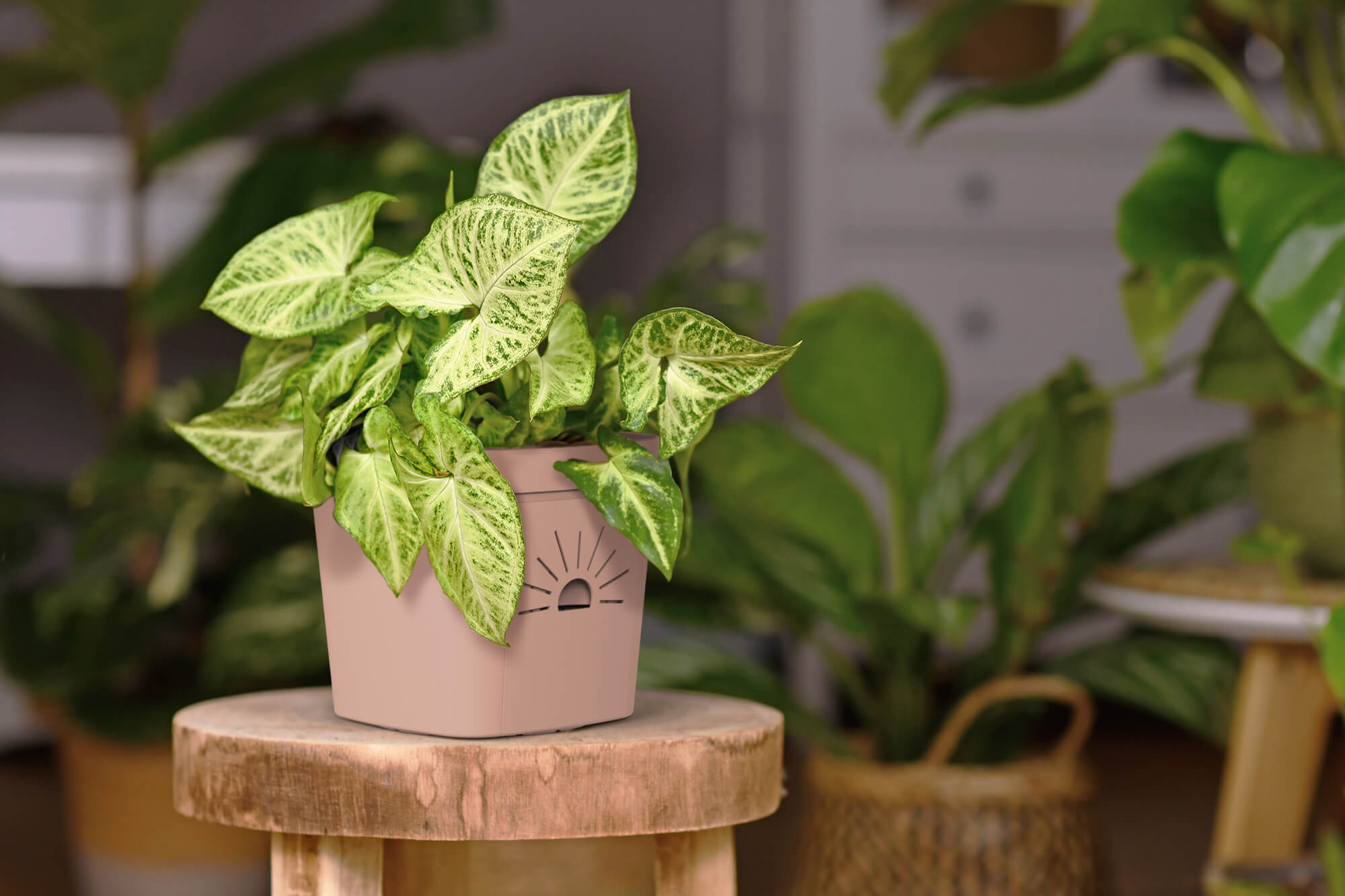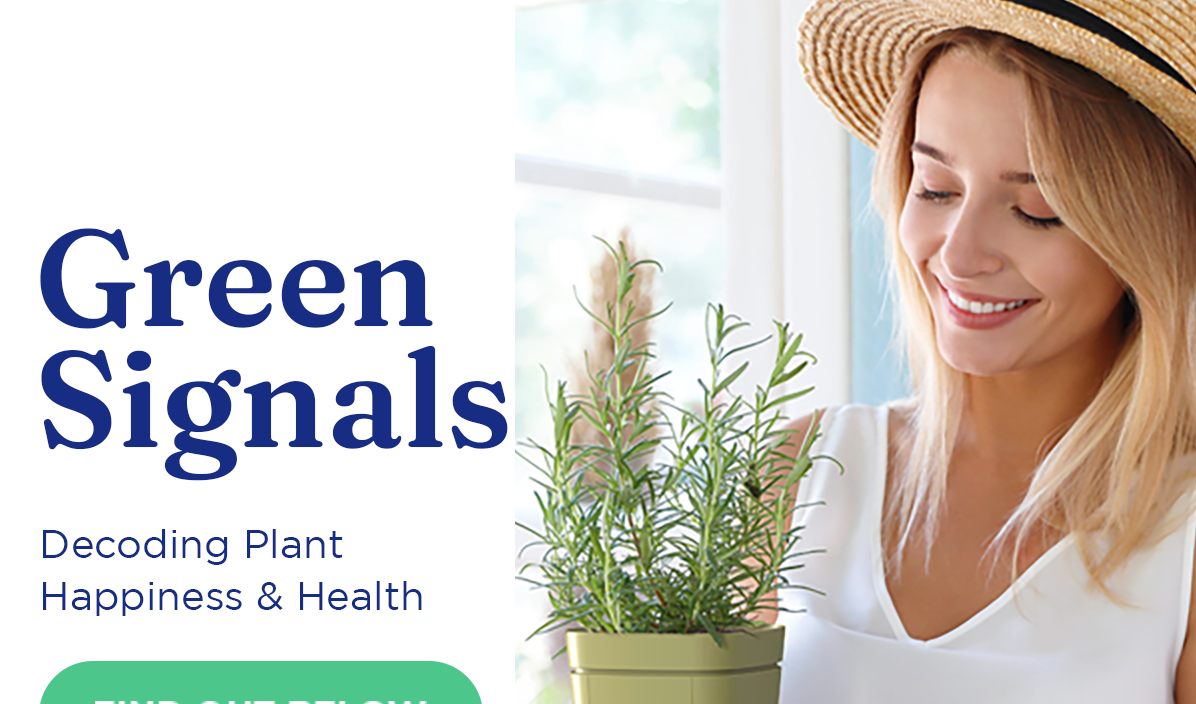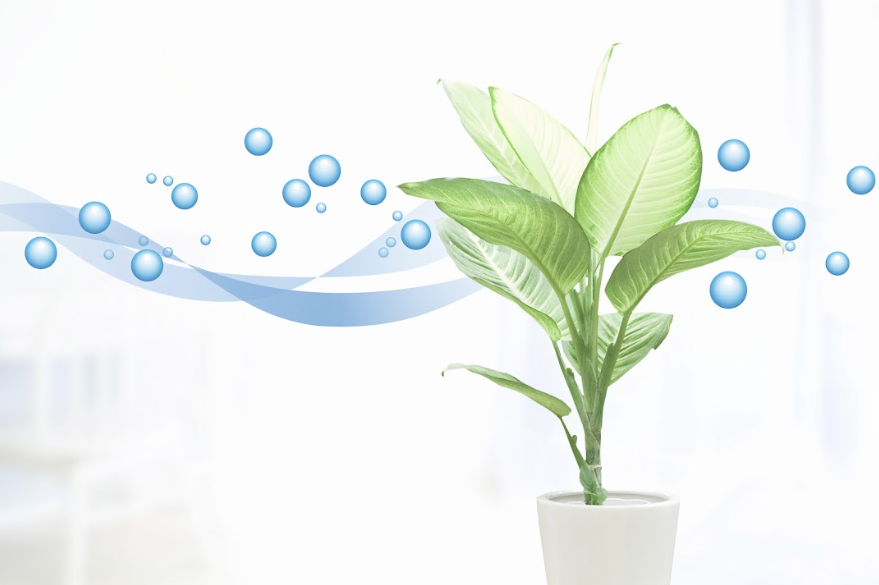Origins
Tradescantia is a type of wildflower that has 85 species and is a part of the Commelinaceae family. It is native to various areas in the Americas, ranging from southern Canada to northern Argentina, as well as the West Indies. They are known by various names such as inch plant, wandering jew, spiderwort, and dayflower. These plants normally grow between one to two feet tall and are commonly seen in wooded areas and open fields. People began growing them as ornamental plants in Europe during the 17th century, and they have since spread to other parts of the world.
Tradescantias are herbaceous perennials and come in both climbing and trailing varieties. Their leaves are long, thin, and blade-like, measuring between 1-17 inches in length. Their flowers can be blue, white, purple, or pink with three petals and six bright yellow anthers, although some species only have flowers that last for one day, opening in the morning and closing by the evening. The scientific name of the genus was chosen by Carl Linnaeus to honor the English naturalists and explorers John Tradescant, the Elder (1570 – 1638) and John Tradescant the Younger (1608–1662). The Tradescant the Younger launched three expeditions to the new Virginia colony, which is where the type species, Tradescantia virginiana, was brought back to England in 1629.
Different regions and countries have many different names for plants of the genus Tradescantia. The name “inchplant” likely comes from the rapid growth of the plant or the spacing of its leaves on the stem. “Spiderwort” is derived from the sticky sap, which comes out when a stem is cut. The term “dayflower” is shared with members of the Commelinaceae family and refers to flowers that only open and close in one day. The controversial term “wandering Jew” originates from a Christian myth about a person who was condemned to wander the earth after taunting Jesus on his way to crucifixion. In recent years, people have tried to avoid using this potentially offensive term and have instead used alternatives such as “wandering dude” or “wandering jewel.”
Genus Summary
| GENUS | Tradescantia |
| COMMON NAMES | Wandering jew, Inchplant, spiderwort, dayflower, Wandering jewel, wandering dude. |
| LIGHT | Bright, indirect light. |
| WATER SCHEDULE | Naked Root = 14 days |
| WATER REQUIREMENTS | Conventional planter = Evenly moist but not soggy. |
| HUMIDITY | High. Over 70 percent |
| TEMPERATURE | 60-80°F |
| FEEDING | 1x month |
| TOXICITY | Mildly toxic to animals and humans |
| PESTS | Aphids, fungus gnats, spider mites |
| DISEASES | Root rot from overwatering |
| POT | Root zone oxygen and a bottom watering reservoir are ideal. |
| SOIL | Equal parts of perlite, peat moss, and sterilized soil |
| FERTILIZER | Half strength, biweekly |
| PROPAGATION | By stem cuttings |
| PRUNING | Prune and pinch often to maintain bush habit |
| SIZE | 6 to 18 inches tall, trails indefinitely. |
Light Requirements
An ideal light level for a Tradescantia is bright indirect sunlight. Direct sunlight can cause the foliage to fade, and yellow leaves will start to appear if it gets too little light. If your plant begins to show these signs of distress, move it closer to the window where it will be exposed to brighter filtered light or take cuttings from the existing plant that can be propagated elsewhere. You’ll know when your wandering jew is receiving enough light as its new growth should begin showing vibrant colors again. Make sure you keep monitoring its progress once you have adjusted its position in case further adjustments are needed.
Water Requirements
When growing Tradescantia in a Naked Root planter, follow a 14-day schedule.
When caring for Tradescantia plants, water them regularly and keep the soil moist. The best way to determine if the plant needs more water is by sticking your finger an inch into the soil – if it feels dry, then give your plant a good drink of water. Be sure that the pot has good drainage so that there isn’t excess moisture in the pot after watering. Otherwise, you risk letting the roots sit in wet soil, which can cause root rot. Aim for evenly moist but not soaking wet soil for optimal growth and health of your Tradescantia!
Humidity
Tradescantia plants prefer high humidity levels and will thrive best in an environment of 70% relative humidity. If the air inside your home is too dry, you can use a plant humidifier to raise the moisture level or mist your Tradescantia regularly with filtered or distilled water. Before using any kind of spray bottle to increase humidity, make sure it’s clean and free from any chemicals that could damage your plant. Distilled water is generally preferred for this purpose. Additionally, placing a tray filled with pebbles and water near the Tradescantia can help boost moisture in its immediate vicinity. Grouping plants together is another great way to increase humidity.
Temperature
Your Tradescantia plant is best suited to temperatures between 60°F and 80°F. It can tolerate light frost in USDA hardiness zones 9 through 12, but this should be avoided as much as possible. If the foliage does die back, then your plant may return in spring if it has been planted directly into the soil outside. Plants grown in containers should not be exposed to frost at all and must be brought indoors when temperatures drop below 60°F consistently. Although high heat may cause some damage to the leaves of your inch plant, it will generally cope better with hot conditions than cold ones.
Toxicity
The sap of Tradescantia plants is known to cause skin irritation in some people and animals. To prevent this from happening, you should keep the plant away from your pets by placing it somewhere that they can’t reach, such as hanging baskets or shelves. Even if your pet does consume the plant, it could still potentially cause problems. Not only will it irritate their digestive tract, but they might also experience a dermatitis-like effect on their skin.
Pests and Diseases
The most common pests for Tradescantia are spider mites, fungus gnats, and aphids.
To prevent spider mites from infesting your Tradescantia plant, keep the humidity levels high. You can do this by misting your plant regularly with water or using a humidifier in the room. If you find that there are already spider mites on the plant, try washing them off with water and increasing the humidity level as soon as possible. For more serious infestations, remove any heavily infested areas and use an insecticide specifically formulated for treating spider mites.
Aphids also love Tradescantia plants and will feed off of their sap. To get rid of aphids, take your plants outside and treat them with neem oil or a strong stream of water. Make sure to check back in 7-10 days after treatment to see if any aphids remain. Reapply treatments accordingly until they have been eliminated completely.
To get rid of fungus gnats, keep the top one inch of soil dry by using a container with a bottom watering reservoir. If you only water the bottom of the plant, fungus gnat larvae will not be able to hatch in the dry soil on top of the Tradescantia.
Root rot is a common disease seen in Tradescantia houseplants, especially when they are overwatered. To prevent root rot, it is important to water your Tradescantia plant correctly. Watering too much can cause the soil to retain an excessive amount of water and suffocate your plants’ roots. If you have a problem with over-watering or poor drainage, there are several steps that you can take to improve the situation. Adding perlite or coarse sand to your soil mix will help increase drainage and aeration of the potting medium for better root health. Additionally, using a pot with excellent airflow around the root zone, such as an air root pruning container, will solve the problem once and for all. By taking these simple steps in caring for your Tradescantia plant, you can help ensure its overall health and reduce susceptibility to pests and diseases related to overwatering issues!
Pot
Tradescantias’ delicate roots are susceptible to rot, and because the plant prefers evenly moist soil, this is a recipe for disaster if you don’t choose the correct pot. Maximum root zone oxygen is the goal when growing Tradescantia. One with a bottom-watering reservoir will help you avoid the dreaded fungus gnats.
Soil
Your Tradescantia will do best in soil with more organic matter, so it is recommended that you create your own potting mix. To make it, combine equal parts of perlite, peat moss, and sterilized soil in a container or pot. Then add a light sprinkle of lime and one handful of organic compost to the mixture. The aim is to get the right balance between water retention and drainage. After adding water and giving the plant a good soak, watch how quickly the soil drains. If too slowly, then you may need to add extra perlite or other coarse material. If too quickly, then you may need to reduce this amount. An acidic pH value of 5-6 will help ensure optimal health for your Tradescantia.
Fertilizer
To ensure your Tradescantia is adequately fertilized, use a water-soluble fertilizer every two weeks during the growing season. It’s important to dilute the fertilizer down to half strength before applying it in order to prevent nutrient burn on the foliage, which can cause discoloration of leaves or other damage. Alternatively, you can apply a slow-release powdered fertilizer once a year to provide extra nutrients for proper growth and development throughout the entire season. Be sure not to overfertilize, as this can have a negative effect on your plant’s health, so adjust amounts accordingly based on how quickly your Tradescantia is responding.
Propagation
When propagating Tradescantia, use stem cuttings from a mother plant. Make sure to remove all but a few leaves from the cuttings before placing them in moist potting soil in a warm, bright area. Every node that contains a leaf will root, so you can lay them horizontally in the soil, and several new plants will pop up. Be sure not to throw away any of the cuttings, as these can all be turned into free plants for your friends! It will take about 2-4 weeks for new shoots to emerge on your plant, but they are well worth the wait. These plants are one of the simplest houseplants to propagate and, with proper care, can be grown into beautiful specimens over time!
Pruning
When pruning your wandering dude, pinching is the best method for maintaining a healthy appearance. To pinch, simply take the stem tip between your fingers and gently squeeze until you can feel the stem snap off. Doing this will encourage two new shoots to grow from just below where you have pinched, making the plant fuller and bushier. Pinching should be done on young plants, and new growth stems as it helps promote a fuller look. So if you want to maintain a healthier-looking Tradescantia, regular pruning with occasional pinching is essential for keeping its size and shape under control!
10 Striking Varieties and Cultivars
The Tradescantia genus of plants are very popular and easy to take care of indoors. These plants come in a variety of colors, leaf shapes, textures, and growth patterns – most of them perfect for hanging baskets. Here is a list of some of the stunning Tradescantia varieties.
Tradescantia fluminensis – Small-leaf Spiderwort – Small-leaf Spiderwort, also known as Tradescantia fluminensis, is one of the most popular hanging basket houseplants due to its fast growth and ease of care. Its leaves clutch onto trailing stems, with an appealing pale lavender underside. This plant produces a pale purple sap when cut or damaged in any way. Tradescantia fluminensis has several varieties available to choose from, including variegata, which features cream-striped leaves, Quicksilver, which has white-striped leaves, and Tricolor, which has cream and purple stripes on each leaf.
Tradescantia pallida – Purple Heart Plant – The Tradescantia pallida, commonly known as Purple Heart Plant or Purple Queen, is a species of spiderwort native to Mexico. It has long been cultivated around the world for its attractive foliage and ease of care. The distinctive leaves are elongated and pointed with slightly hairy surfaces and green coloration, which is highlighted by red or purple fringing. Small, three-petaled flowers appear in clusters at the tips of stems throughout spring and summer. They can be white, pink, or purple, depending on the cultivar. Additionally, this plant forms trailing stems rather than upright growth. These vines have clearly segmented joints from which roots easily take hold if left touching moist soil. This makes it easy to propagate more plants without having to purchase seeds or cuttings from nurseries!
Tradescantia spathacea – Boat Lily – Tradescantia spathacea, also known as Moses-in-the-Cradle, Boat Lily, Moses-in-a-Boat, Oyster Plant, and Cradle Lily, is an easy-to-care-for houseplant that thrives in small spaces. Its variegated foliage comes in shades of purple, blue-green, gold, and pink and grows erect from a central rosette with leaves that don’t trail or hang down. It produces small white flowers in distinctive “boats” at the base of its lower leaves which account for its common names. This variety can be propagated easily through pups that form at its base in large masses. Growing up to 8 inches tall, this plant is perfect for brightening up any room!
Tradescantia zebrina – Silver Inch Plant – Silver Inch Plant is a stunning plant with bright and colorful leaves. Its upper surface has a greenish-silver hue, banded with silver stripes and edged in purple. Meanwhile, the underside of the leaves are deep wine red. It can also produce small lavender flowers when given enough light. The shape of its foliage is oval, pointed at the tips but rounded at its base. These lovely blooms come in various shades of pink to purplish hues that create an eye-catching contrast against the foliage’s vivid colors. Silver Inch Plant typically grows 9 inches tall, but it can trail along infinitely because each branch or node will grow roots wherever it touches the soil. It is spectacularly easy to propagate.
Tradescantia albiflora ‘Nanouk’ – Tradescantia albiflora ‘Nanouk’ is a stunning, variegated cultivar of Tradescantia that is known for its fuzzy leaves. The distinctive tri-colored foliage consists of shades of green, purple, and pink, giving the plant a truly unique look. This variety has sturdier stems than some other types of Tradescantia, which allows it to trail gracefully from hanging baskets or containers without breaking. The undersides of the leaves are violet in color, adding even more interest to this captivating houseplant. When new growth appears on Nanouk, it will be a striking neon purple color, making it eye-catching in any home’s décor.
Tradescantia andersoniana – Blushing Maid Plant – Blushing Maid Tradescantia, also known as Blushing Bride Tradescantia, is a trailing, tender perennial plant native to Central America. Its leaves start out with pink variegation that slowly fades to white. The flowers are three-petaled with white petals tinged with lilac pink. To ensure the successful growth and blooming of this beautiful plant, it should be placed in bright indirect light, such as near an east or west-facing window. It prefers warm room temperatures and needs consistently moist soil rich in nutrients for optimal health. This variety grows 18 inches tall.
Tradescantia navicularis – Chain Plant – Chain Plant, also known as Widow’s Tears or Day Flower, is a unique houseplant that features two types of stems with different growth habits. The upright stems are short and bear tight overlapping leaves, while the creeping/trailing stems spread along the ground and feature more open leaves. Its iconic boat-shaped leaves give it its name, and it can change color depending on light exposure. For vibrant pink and magenta tones in your Chain Plant, keep it in a sunny spot away from drafts. It prefers bright, indirect light combined with average warmth to thrive. Be sure to keep the soil moderately moist but not overly wet!
Tradescantia sillamontana -Cobweb Spiderwort – Cobweb Spiderwort, also known as White Velvet or White Gossamer Plant, is a small upright perennial plant with highly branched hairy stems. This species is native to northeastern Mexico and can thrive in areas with very little water, making it one of the most drought-tolerant plants in its genus. To ensure flowering, Cobweb Spiderwort should not be given too much water or shade; otherwise, the flowers will not bloom. The leaves of this species are oblong-lanceolate and are stacked one atop another. New leaves arrive in a greenish-purple tone. At the end of each stem lies an eye-catching deep pink flower that gives off an alluring appeal.
Tradescantia chrysophylla – Baby Bunny Bellies – Baby Bunny Bellies Tradescantia is a stunningly unique trailing or climbing plant with fuzzy foliage that feels just like the soft, velvety underbelly of a baby bunny. It produces new leaves which appear in shades of bright violet and lime green and have purply undersides. This easy-to-care-for houseplant thrives indoors when provided with sufficient light, making it an ideal choice for adding interest to a hanging basket or cascading down from shelves and other elevated positions such as window sills.
Tradescantia virginiana – Virginia Spiderwort – The Virginia Spiderwort is an easy-to-care-for perennial herbaceous plant that grows in clumps and can reach heights of up to 3 feet. The leaves are long, bright green, and narrow, while the flowers range from violet-blue to purple in color with contrasting yellow stamens. Each flower only lasts one day, but they bloom each season prolifically with numerous buds found in terminal clusters (umbels). They require little maintenance – just water when the soil becomes dry and fertilize a few times per year for best results. This hardy plant is perfect for adding some color to your indoor to your garden!
Summary of Tradescantia Plant Care
Tradescantia plants need evenly moist (but not soggy) soil, biweekly fertilizer, and bright indirect lighting to thrive. Give them high humidity and the occasional pruning, and they will reward you with many free plants to give away to your friends and family.

 Verified Buyer
Verified Buyer









